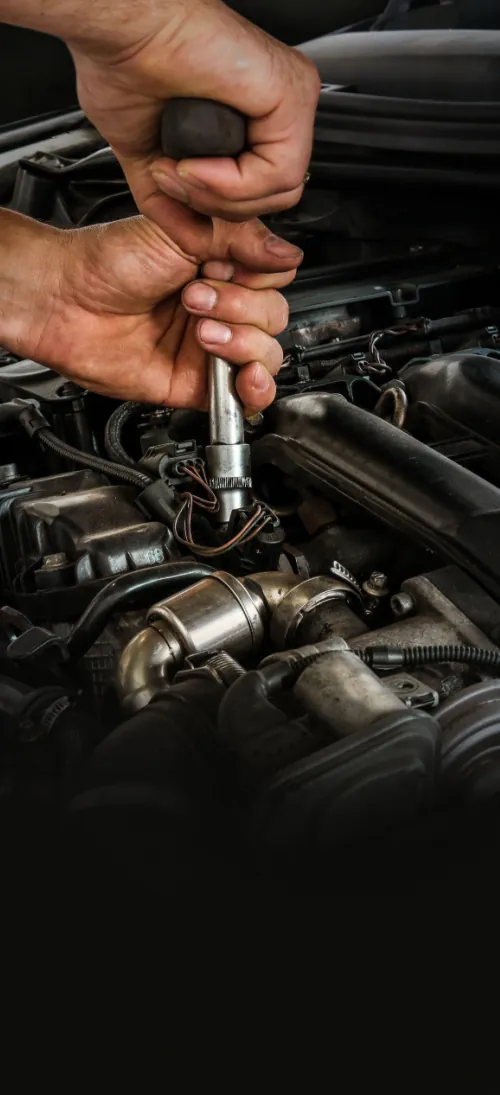
Engine Shipping
Save money on shipping your motor or engine with our specialized shipping services! Our team of experts guarantees safe and timely delivery, and our competitive rates can be easily integrated into your website for instant access. Choose us for the best rates and service in the industry.
Want To Learn More About Engine Shipping?
Shipping Auto Parts Shipping a Transmission Shipping Auto Body PartsWant To Learn More About Engine Shipping?
Shipping Auto Parts Shipping a Transmission Shipping Auto Body PartsAre you seeking a professional engine shipping company that offers competitive rates? FreightCenter provides specialized engine shipping services that save you money on every shipment. Our easy integration into your website allows customers to access our low rates instantly. With years of experience in engine shipping, we’re dedicated to delivering your engines and heavy auto parts safely and timely.
Our team of shipping experts will guide you throughout the process and ensure that your engine arrives in the expected condition and on time. Shipping an engine can be stressful, but with FreightCenter, it’s hassle-free.
We have access to a network of trusted carriers and use a proprietary system that compares rates and services from multiple freight carriers to find the best option for shipping your engine. Our team also understands the importance of documentation and will ensure that your Bill of Lading is complete and accurate, serving as a legal record of the shipping agreement.
You can trust us with your engine freight shipping. Contact FreightCenter today to learn more about how we can help you.
Thousands of businesses trust FreightCenter to move their freight faster, smarter, and cheaper! From unbeatable rates to top-notch service, our customers are raving about their shipping success.
See why they keep coming back!
Award-Winning Service, Trusted by Shippers Everywhere!
- 2021, 2017 & 2016 Food Logistics’ Top Green Providers
- 2021 & 2018 Supply & Demand Chain Executives’ Pros to Know: Matthew Brosious
- 2020 & 2019 Top Food Logistics’ 3PL & Cold Storage Provider Award
- 2020 & 2019 Business Observer’s Top 500 Companies on the Gulf Coast
- 2020 & 2017 SmartWay® Transport Partner
- 2020 & 2017 Food Logistics’ Champions: Rock Stars of the Supply Chain
- 2020 Best of Palm Harbor Awards for Local Businesses
- 2017 Green Supply Chain Award from Supply & Demand Chain Executive
- 2017 Tampa Bay Business Journal Heroes at Work
- 2016, 2015, & 2012 Food Logistics Top 100 Software and Technology Providers
- 2013 Tampa Bay Business 100 by Tampa Bay Business Journal
- 2013 Top 100 Great Supply Chain Partners by SupplyChainBrain
- 2012 TIA Samaritan Award Honorable Mention
- 2012, 2011 & 2010 TBBJ Fast 50 Recipient
- 2013, 2011, & 2010 Diversity Business Top Businesses

Why Choose FreightCenter to Ship An Engine?
If you need to ship an engine, whether a car engine or an industrial one, you want to ensure that it arrives at its destination safely and on time. That’s why you should consider using FreightCenter, a top-rated freight shipping company that offers reliable and cost-effective engine shipping services. Here are some of the reasons why FreightCenter is an excellent choice for shipping engines:
Expertise in Engine Shipping: FreightCenter has years of experience shipping engines of all types and sizes, including car engines, industrial engines, and marine engines. They have the expertise to handle your engine shipping needs and ensure your shipment arrives safely and on time.
Wide Range of Engine Shipping Options: FreightCenter offers a wide range of shipping options to meet your specific engine shipping needs. They have access to a carrier network that provides ground, air, and sea freight options. This means you can choose the most appropriate shipping method for your engine based on size, weight, and distance.
Competitive Pricing: FreightCenter offers competitive pricing for engine shipping services. They have relationships with multiple carriers and can negotiate lower rates on your behalf. This means you can save money on your engine shipment without sacrificing quality.
Comprehensive Insurance Coverage: FreightCenter offers comprehensive insurance coverage for your engine shipment. This means that in the unlikely event that your engine is lost or damaged during shipping, you will be fully covered for the replacement value of your engine.
Easy-to-Use Online Platform: FreightCenter’s online platform makes it easy to get a quote, book your engine shipment, and track your shipment in real-time. You can access the platform from anywhere, at any time, and get up-to-date information on the status of your shipment.
Exceptional Customer Service: FreightCenter has a team of dedicated customer service representatives available to help you with any questions or concerns about your engine shipment. They are available by phone, email, or chat and will work with you to ensure your engine shipment succeeds.
Best Way to Ship An Engine
When it comes to shipping an engine or motor, shippers have a few different options. However, while there are other options besides LTL, it is generally recommended for several reasons.
One alternative engine shipping option is full truckload shipping. This option is best suited for larger shipments that require special equipment and tend to be the fastest option available. However, with full truckload shipping, you must pay for all the space your shipment doesn’t take up, which can be expensive for smaller loads like engines or motors. Also, finding a carrier that will ship your type of item can be challenging.
Another option is partial truckload shipping, a fusion of LTL and full truckload. With this option, you receive dedicated trucks that move smaller loads simultaneously. However, a limited number of trucks may be available, making scheduling more challenging. Also, carriers specializing in moving temperature-controlled or hazardous items may not be suitable for engine shipments.
For the foreseeable future, LTL remains the top choice for those looking to ship engines or motors. LTL carriers offer a wide range of accessorial services, making customizing your shipment to meet your specific needs easier. LTL also provides a cost-effective option for smaller shipments by consolidating multiple shipments onto one truck, which allows shippers to share the cost of a full truckload. Additionally, LTL carriers have experience with shipping engines and motors and are familiar with the specific requirements for handling these items safely.
Ultimately, the best option for shipping an engine or motor will depend on the specific needs of the shipment. However, LTL shipping is often the most cost-effective and reliable option for smaller loads.
The Best Engine Shipment Carriers
FreightCenter is your trusted partner for engine shipment services. When shipping your engine, you want to be sure that it’s in the hands of experienced professionals who will take great care of it. That’s why we only work with the best engine shipment carriers in the industry.
At FreightCenter, we understand that shipping an engine can be complex and challenging. Engines are heavy and bulky, often requiring specialized handling and transportation. That’s why we have a network of over 50 of the top LTL carriers, including national and regional options and international engine shipping options. With our vast carrier network, we can provide you with access to the best engine shipment carriers in the industry, ensuring that your engine is in the hands of experts who know how to handle it.
Our carriers are carefully vetted to ensure that they meet our high quality, reliability, and professionalism standards. We only work with carriers with a proven track record of providing exceptional service, timely delivery, and secure transportation for all types of engines. We also work closely with our pages to ensure they have the equipment and training to handle engines of all sizes and configurations, from small automotive to large industrial engines.
When you work with FreightCenter, you can rest assured that your engine shipment is in good hands. We’ll help you find the best carrier for your specific needs and budget and ensure that your engine is transported safely and securely. We offer a wide range of engine shipping services, including LTL, FTL, expedited, and international shipping options, so that you can choose the best for your needs.
In addition to our carrier network, we offer our customers a range of other benefits, including online booking and tracking, 24/7 customer support, and insurance options to protect your engine during transit. We’re committed to providing our customers with the highest level of service and support, and we’ll work tirelessly to ensure that your engine shipment is a success.
Don’t trust your engine shipment to just any carrier. Choose FreightCenter, the engine shipment experts who only work with the best carriers in the industry. Contact us today to learn more about our engine shipping services and to get started on your shipment.
To create value for our customers by delivering customized shipping solutions that meet their unique needs and to fulfill shipping demands from simple to complex with expertise, guidance and ingenuity.
LTL (less-than-truckload) engine shipping is a cost-effective and efficient way to transport engines that are too large or heavy for parcel shipping but not large enough to require a full truckload. LTL engine shipping involves combining multiple small shipments from different customers onto one truck, allowing each customer to share the shipment cost.
Truckload engine shipping, also known as full truckload (FTL) engine shipping, is a transportation option for engines that require the entire truck trailer space. Unlike LTL shipping, FTL shipping is reserved for larger engines that exceed LTL weight and size limits, typically weighing more than 20,000 pounds or having dimensions that exceed 12 feet in length, 8 feet in width, and 8 feet in height.
Expedited engine shipping is a transportation option that prioritizes the speed of delivery for engines that need to be shipped quickly. This can be especially important for urgent situations, such as engine repairs or replacements for critical machinery.
Specialized engine shipping is a transportation option for engines that require specialized handling, equipment, or shipping conditions. Specialized engines may include high-value engines, oversized engines, or engines that require temperature-controlled transportation.


What Freight Class Do I Use?
When determining the freight class for your engine, it is essential to consider several factors, such as weight, dimensions, density, value, and stowability. Depending on their characteristics, engines are typically classified as Class 70 or Class 85.
Class 70 engines weigh less than 12 pounds per cubic foot and are less than 18 inches long. These engines are typically crated and can be shipped using standard freight services. They are also engines considered to have a low value and are relatively easy to handle.
Class 85 engines, on the other hand, weigh more than 12 pounds per cubic foot and are between 18 and 24 inches long. They are engines considered to have a higher value and may require special handling or stowage. These engines are typically shipped on pallets and may require special handling or equipment during transit.
You can use the National Motor Freight Classification (NMFC) guidelines to determine your engine’s freight class. The NMFC is a standardized system that assigns freight classes based on specific criteria such as weight, dimensions, density, and value. You can also consult with a freight expert or use an online freight class calculator to help determine the correct freight class for your engine shipment.
Correctly classifying your engine is vital to ensure you are charged the correct rate and avoid additional fees or penalties. Please accurately classify your engine to avoid costly billing adjustments or legal consequences. Trust FreightCenter to help you correctly classify your engine and ensure a smooth and cost-effective shipment.
Steps To Prepare An Engine For Shipping
While in the transportation process of shipping a single community through an LTL provider, specific packaging requirements are put into place by the carriers. Throughout this transportation process, this freight will have been moved from one truck to the other at various amounts of times as well as at different terminals. Due to the freight shippers only shipping bulky commodities, everything is moved through the terminals by either forklift or a pallet jack. This means that for an item to be moved, it would have to at least be on a pallet, making it forklift/pallet jack accusable.
Now, whether or not you choose a crate or a pallet, you must drain all of the fluids from the engine. The fluid within is a potential danger, and the LTL carrier shall not accept an engine that still has those within. Both methods have their unique classification and rate table to determine the shipment cost. An engine on a pallet is class 85, while a crated engine’s class is 70. Pricing tends to be where the higher the class, the higher the cost. However, crating does take a lot less effort when it comes to the physical packaging, so the grass is only sometimes greener on the other side.
Shipping an engine can be a complex process, and it is important to properly pack the engine to ensure that it arrives at its destination safely and undamaged. Follow these steps to pack an engine for shipping via freight carrier properly.
- Step 1: Clean the Engine. Before packing the engine, ensure it is free of dirt or debris. This will prevent any contaminants from damaging the engine during transport.
- Step 2: Drain Fluids The engine should be drained of all fluids, including oil, coolant, and fuel. This will help to prevent spills or leaks during transport.
- Step 3: Disassemble the engine into its components to make it easier to pack and transport. This will also help to prevent damage during shipping.
- Step 4: Wrap each engine component in bubble wrap or foam to protect it. Secure the wrap with tape or zip ties to prevent it from breaking during transport.
- Step 5: Pack the Engine in a Crate. Ensure the container can withstand the rigors of shipping. This will prevent the components from shifting during transport.
- Step 6: Secure the Crate After packing the engine into the crate with metal banding or straps. This will prevent the container from coming apart during shipping.
- Step 7: Label the crate with the recipient’s address, contact information, and any handling instructions or special requirements.
By following these steps, you can ensure your engine is adequately packed and ready for shipping via freight carrier. Our team of experienced freight agents can help you find the best shipping options for your specific needs. For more information on engine shipping or a free quote, contact FreightCenter today.
Shipping Paperwork For An Engine
A Bill of Lading (BOL) is a legal document that serves as a receipt of goods being transported by a carrier. It outlines the terms and conditions of the shipping agreement between the shipper (seller) and the carrier (transporter). In engine shipping, a BOL is used to document the transport of the engine from the shipper to the receiver, ensuring the engine is shipped safely and accurately.
When shipping an engine, the BOL will contain the following information:
- Shipper and receiver details: The names, addresses, and contact information of the shipper and receiver are included in the BOL.
- Engine details: The BOL will contain detailed information about the engine, such as its make, model, and serial number. This information is used to ensure that the correct engine is being shipped.
- Shipping details: The BOL will contain information about the transportation of the engine, including the pickup and delivery addresses, the shipping method (such as LTL or FTL), the shipping date, and any special instructions or requirements.
- Payment details: The BOL will outline the agreed-upon shipping charges and any other fees or expenses associated with the shipment.
- Signature and date: The BOL must be signed by both the shipper and the carrier to confirm that the engine has been received and transported according to the terms outlined in the document.
Why is a BOL Important for Engine Shipping?
In addition to serving as a receipt for the engine, the BOL is an essential legal document that can be used for any disputes or issues arising during shipping. It serves as proof of the agreement between the shipper and the carrier and can be used to resolve any problems related to the shipment, such as lost or damaged goods or disagreements about payment.
PRO TIP: Inspect the Engine At Delivery
When your engine arrives at its destination, it is crucial to scrutinize it to ensure it was not damaged during transit. Here are the steps you should follow to check your engine upon delivery:
- Verify the condition of the crate or pallet: Check the exterior for any visible signs of damage, such as cracks or breaks.
- If you notice any damage, photograph and document it on the delivery receipt.
- Inspect the engine and the crate or pallet for any leaks or spills.
- If you notice any leaks or spills, document it on the delivery receipt.
- Inspect the engine for damage:
- Carefully inspect the engine for any signs of damage, such as dents, scratches, or cracks.
- Check all the engine parts, including the cylinder heads, crankshaft, and connecting rods.
- If you notice any damage, document it on the delivery receipt.
- Verify the engine model and serial number: Check the engine model and serial number to ensure it matches the information on the shipping documents.
- Start the engine and check for any unusual noises or vibrations.
- If you notice any issues, document them on the delivery receipt.
- Sign the delivery receipt: If you are satisfied with the engine’s condition, sign the delivery receipt.
- If there are any issues or damage, document them on the delivery receipt and contact the carrier immediately.
Following these steps ensures that your engine is delivered in good condition and any issues are documented and addressed promptly.
Get Started Today
Start today by using our free freight quote tool. This helps shoppers find the best rate by analyzing all available carriers and routes for their shipment, and you won’t need to provide too much info. What would be required are the postal codes of both the pickup and drop locations. In addition, the facility types of each site, along with the dimensions of your shipment. You can compare LTL rates and get the best one possible for your shipment.
Engine Shipping FAQs:
Q. How to Ship an Engine?
You can ship on a pallet or in a crate. Each method has a different freight class and rate table for determining shipping costs. A crated engine’s class is 70(Cheaper option), while engine pallet shipping is class 85.
Q. How Do I Prepare My Engine for Shipping?
Oil, grease, water, transmission fluid, etc., must be removed from auto parts before shipping. Drain all fluids, then clean the engine. Carriers will refuse any auto parts dripping because they can damage the packing materials and other items they are transporting.
Q. How Long Does it Take to Ship an Engine?
The time it takes to ship an engine depends on several factors, such as the distance between the pickup and delivery locations, the mode of transportation used, and any potential delays in transit. For example, shipping an engine domestically within the United States could take anywhere from 1-5 business days for ground transportation or 1-3 business days for air transportation. However, shipping an engine internationally could take several weeks or even months, depending on the destination country and any customs regulations that must be followed.
Q. What is the Difference Between an Engine and a Motor?
The terms “engine” and “motor” are often used interchangeably, but technically they refer to different things. An engine is a machine that converts fuel into mechanical energy to perform work. It typically involves the combustion of fuel to create energy. Examples of engines include internal combustion engines found in cars, trucks, and airplanes and external combustion engines like steam engines. On the other hand, a motor is a machine that converts electrical energy into mechanical energy to perform work. Examples of motors include electric motors found in appliances, machinery, and vehicles. So, the main difference between an engine and a motor is the source of energy they convert to mechanical energy. Engines convert fuel into mechanical energy, while motors convert electrical energy into mechanical energy.
Q. How to Ship an Engine via LTL
Less than Truckload providers do have requirements that apply throughout the shipments planning. With weights of 150-15,000 pounds, users only pay for the cargo’s space. This works very well for engine shipments. Several shipping options are provided. Clients can ship via standers, guaranteed, or expedited services with carriers. Standard shipping offers the cheapest rates out of all three. However, it does not ensure that the commodity will be shipped promptly. Guaranteed shipping service guarantees the number of transit days an item will take to ship. However, it does not assure the pickup time, meaning the delivery date would shift every day that a pickup is missed. The price range of guaranteed services varies but is usually a second to the more economical pricing out of the three. Lastly, expedited service is used when a commodity needs to be picked up and delivered by a specific date and time; this service assures that prices vary on the carriers’ fluctuations.
Here are three advantages of using FreightCenter to ship your engine

Cost-effective:
FreightCenter offers a wide range of shipping options tailored to meet the specific needs and budget of the customer. You can choose the best shipping option based on your budget and timeline. FreightCenter also provides a quote upfront, so you know exactly how much you will pay for the shipment. By using FreightCenter, you can save money on shipping costs while still getting the best possible service.

Expertise:
FreightCenter has a team of shipping experts trained and experienced in handling engines and other heavy or oversized items. They know the best way to pack and transport your engine to ensure it arrives at its destination in the same condition as when it was shipped. FreightCenter also offers insurance options to protect your engine in case of any damage during transit.

Convenience:
FreightCenter provides a one-stop solution for all your shipping needs. They offer pickup services, tracking, and delivery options, so you don't have to worry about anything. FreightCenter also has an easy-to-use online platform that allows you to get a quote, book a shipment, and track your shipment's progress all in one place. This convenience saves you time and hassle and lets you focus on other essential aspects of your business or personal life.


